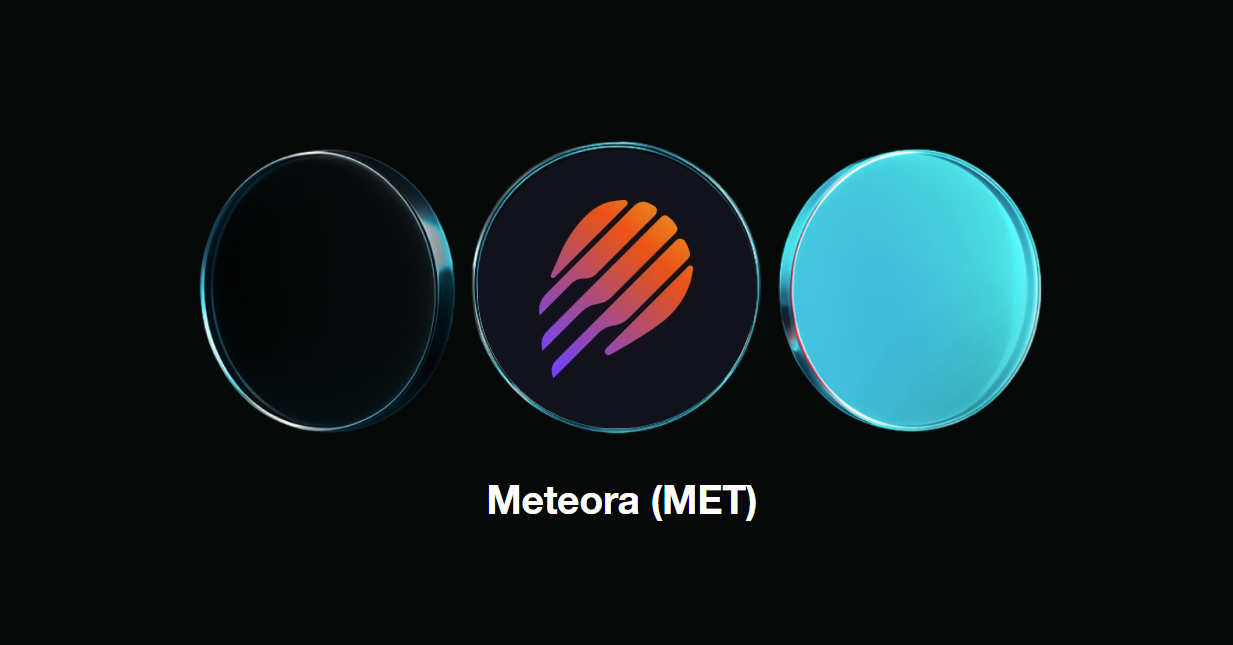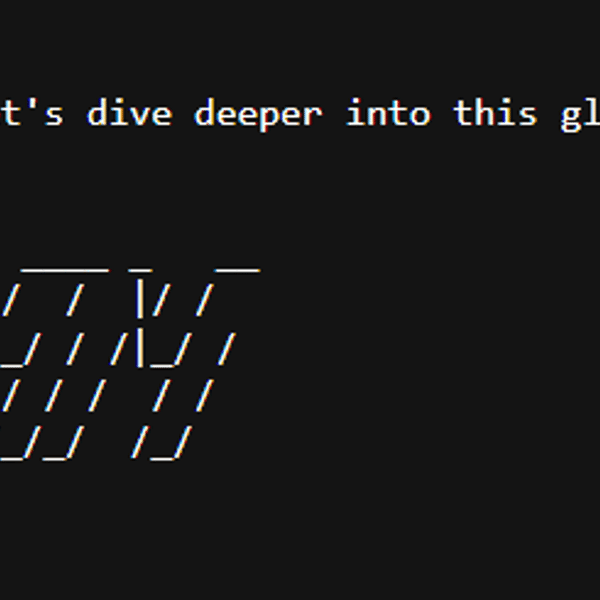Bitget: ¡En el Top 4 por volumen de trading diario global!
Cuota de mercado de BTC59.16%
Comisiones de gas de ETH ahora: 0.1-1 gwei
Gráfico arcoíris de Bitcoin: Acumular
BTC/USDT$114910.79 (-0.42%)Índice de miedo y codicia50(Neutral)
Índice de la temporada de altcoins:0(Temporada de Bitcoin)
Flujo neto total de ETF en spot de Bitcoin +$149.3M (1d); +$229M (7d).Paquete de obsequios de bienvenida para nuevos usuarios por valor de 6.200 USDT.Reclamar ahora
Tradea en cualquier momento y lugar con la app de Bitget.Descargar ahora
Bitget: ¡En el Top 4 por volumen de trading diario global!
Cuota de mercado de BTC59.16%
Comisiones de gas de ETH ahora: 0.1-1 gwei
Gráfico arcoíris de Bitcoin: Acumular
BTC/USDT$114910.79 (-0.42%)Índice de miedo y codicia50(Neutral)
Índice de la temporada de altcoins:0(Temporada de Bitcoin)
Flujo neto total de ETF en spot de Bitcoin +$149.3M (1d); +$229M (7d).Paquete de obsequios de bienvenida para nuevos usuarios por valor de 6.200 USDT.Reclamar ahora
Tradea en cualquier momento y lugar con la app de Bitget.Descargar ahora
Bitget: ¡En el Top 4 por volumen de trading diario global!
Cuota de mercado de BTC59.16%
Comisiones de gas de ETH ahora: 0.1-1 gwei
Gráfico arcoíris de Bitcoin: Acumular
BTC/USDT$114910.79 (-0.42%)Índice de miedo y codicia50(Neutral)
Índice de la temporada de altcoins:0(Temporada de Bitcoin)
Flujo neto total de ETF en spot de Bitcoin +$149.3M (1d); +$229M (7d).Paquete de obsequios de bienvenida para nuevos usuarios por valor de 6.200 USDT.Reclamar ahora
Tradea en cualquier momento y lugar con la app de Bitget.Descargar ahora

.png)
Predicción de precios Merlin Chain (M-BTC) (M-BTC)
No listado
¿Cuánto podría valer Merlin Chain (M-BTC) en 2025, 2026, 2030 y más adelante? ¿Cuál es el precio previsto de Merlin Chain (M-BTC) para mañana, esta semana o este mes? ¿Y qué retorno de la inversión podrías obtener si holdeas Merlin Chain (M-BTC) hasta el 2050?
Esta página ofrece herramientas de predicción de precios de Merlin Chain (M-BTC) tanto a corto como a largo plazo para ayudarte a evaluar el rendimiento futuro del precio de Merlin Chain (M-BTC). También puedes establecer tus propias predicciones para estimar el valor futuro de Merlin Chain (M-BTC).
Es importante señalar que, dada la volatilidad y complejidad inherentes al mercado de las criptomonedas, estas predicciones, si bien ofrecen información sobre posibles rangos de precios y escenarios, deben considerarse con cautela y escepticismo.
Esta página ofrece herramientas de predicción de precios de Merlin Chain (M-BTC) tanto a corto como a largo plazo para ayudarte a evaluar el rendimiento futuro del precio de Merlin Chain (M-BTC). También puedes establecer tus propias predicciones para estimar el valor futuro de Merlin Chain (M-BTC).
Es importante señalar que, dada la volatilidad y complejidad inherentes al mercado de las criptomonedas, estas predicciones, si bien ofrecen información sobre posibles rangos de precios y escenarios, deben considerarse con cautela y escepticismo.
Gráfico de predicción del precio de Merlin Chain (M-BTC) para 2025 y más allá
Prediciendo el precio de Merlin Chain (M-BTC) en los próximos 10 días según una tasa de crecimiento diaria prevista de +0.014%.
Precio de hoy (Oct 28, 2025)
$114,227.58
Precio mañana (Oct 29, 2025)
$114,243.57
Precio en 5 días (Nov 2, 2025)
$114,307.56
Precio este mes (Oct 2025)
$114,405.69
Precio el próximo mes (Nov 2025)
$114,886.19
Precio en 5 meses (Mar 2026)
$116,828.48
Precio en 2025
$117,031.77
Precio en 2026
$122,883.36
Precio en 2030
$149,365.49
Según las predicciones diarias de precio de Merlin Chain (M-BTC) a corto plazo, se proyecta que el precio de Merlin Chain (M-BTC) será $114,227.58 en Oct 28, 2025, $114,243.57 en Oct 29, 2025, y $114,307.56 en Nov 2, 2025. Para las predicciones mensuales de precios de Merlin Chain (M-BTC), se prevé que el precio de Merlin Chain (M-BTC) sea $114,405.69 en Oct 2025, $114,886.19 en Nov 2025, y $116,828.48 en Mar 2026. Para las predicciones anuales de precios de Merlin Chain (M-BTC) a largo plazo, se prevé que el precio de Merlin Chain (M-BTC) sea $117,031.77 en 2025, $122,883.36 en 2026, y $149,365.49 en 2030.
Predicción del precio de Merlin Chain (M-BTC) para hoy
El precio actual de Merlin Chain (M-BTC) (M-BTC) es $113,669.17, con un cambio en el precio en 24h del -0.73%. Se espera que el precio de Merlin Chain (M-BTC) (M-BTC) alcance $114,227.58 hoy. Más información sobre Precio de Merlin Chain (M-BTC) hoy.
Predicción de precios de Merlin Chain (M-BTC) para Oct 2025
Se espera que el precio de Merlin Chain (M-BTC) (M-BTC) cambie un 2.11% en Oct 2025 y que el precio de Merlin Chain (M-BTC) (M-BTC) alcance $114,405.69 a finales de Oct 2025.
Predicción de precios de Merlin Chain (M-BTC) para 2025
Se espera que el precio de Merlin Chain (M-BTC) (M-BTC) cambie un Infinity% en 2025 y el precio de Merlin Chain (M-BTC) (M-BTC) alcanzará $117,031.77 a finales de 2025.
Predicción de precios de Merlin Chain (M-BTC) a largo plazo: 2026, 2030, 2035, 2040, 2050
Lo siguiente es un modelo de predicción de precios de Merlin Chain (M-BTC) basado en una tasa de crecimiento fija. Ignora el impacto de las fluctuaciones del mercado, los factores económicos externos o las emergencias. En cambio, se centra en la tendencia del precio promedio de Merlin Chain (M-BTC). Ayuda a los inversores a analizar y calcular rápidamente el potencial de ganancias al invertir en Merlin Chain (M-BTC).
Ingresa tu tasa de crecimiento anual prevista para el precio de Merlin Chain (M-BTC) y observa cómo el valor de Merlin Chain (M-BTC) cambiará en el futuro.
Ingresa tu tasa de crecimiento anual prevista para el precio de Merlin Chain (M-BTC) y observa cómo el valor de Merlin Chain (M-BTC) cambiará en el futuro.
Predicción de precios anuales de Merlin Chain (M-BTC) basada en un crecimiento anual previsto del 5%
%
Crecimiento anual previsto. Ingresa un porcentaje entre -100% y +1,000%.
| Año | Precio previsto | ROI total |
|---|---|---|
2026 | $122,883.36 | +5.00% |
2027 | $129,027.53 | +10.25% |
2028 | $135,478.9 | +15.76% |
2029 | $142,252.85 | +21.55% |
2030 | $149,365.49 | +27.63% |
2035 | $190,632.42 | +62.89% |
2040 | $243,300.64 | +107.89% |
2050 | $396,311.11 | +238.64% |
Sobre la base de una tasa de crecimiento anual del 5%, se espera que el precio de Merlin Chain (M-BTC) (M-BTC) alcance $122,883.36 en 2026, $149,365.49 en 2030, $243,300.64 en 2040, y $396,311.11 en el año 2050.
Predicción de precios de Merlin Chain (M-BTC) para 2026
En 2026, según una tasa de crecimiento anual prevista del 5%, se espera que el precio de Merlin Chain (M-BTC) (M-BTC) alcance $122,883.36. Con base en esta predicción, el retorno de la inversión acumulado por holdear Merlin Chain (M-BTC) hasta el final de 2026 sería del 5.00%.
Predicción de precios de Merlin Chain (M-BTC) para 2030
En 2030, según una tasa de crecimiento anual prevista del 5%, se espera que el precio de Merlin Chain (M-BTC) (M-BTC) alcance $149,365.49. Con base en esta predicción, el retorno de la inversión acumulado por holdear Merlin Chain (M-BTC) hasta el final de 2030 sería del 27.63%.
Predicción de precios de Merlin Chain (M-BTC) para 2035
En 2035, según una tasa de crecimiento anual prevista del 5%, se espera que el precio de Merlin Chain (M-BTC) (M-BTC) alcance $190,632.42. Con base en esta predicción, el retorno de la inversión acumulado por holdear Merlin Chain (M-BTC) hasta el final de 2035 sería del 62.89%.
Predicción de precios de Merlin Chain (M-BTC) para 2040
En 2040, según una tasa de crecimiento anual prevista del 5%, se espera que el precio de Merlin Chain (M-BTC) (M-BTC) alcance $243,300.64. Con base en esta predicción, el retorno de la inversión acumulado por holdear Merlin Chain (M-BTC) hasta el final de 2040 sería del 107.89%.
Predicción de precios de Merlin Chain (M-BTC) para 2050
En 2050, según una tasa de crecimiento anual prevista del 5%, se espera que el precio de Merlin Chain (M-BTC) (M-BTC) alcance $396,311.11. Con base en esta predicción, el retorno de la inversión acumulado por holdear Merlin Chain (M-BTC) hasta el final de 2050 sería del 238.64%.
¿Cuánto podrías ganar con tus Merlin Chain (M-BTC)?
Si inviertes $100 en Merlin Chain (M-BTC) este año y lo holdeas hasta 2026, la predicción del precio sugiere una ganancia potencial del $5, lo que refleja un ROI del 5.00%. (Las comisiones no están incluidas en esta estimación).
Aviso legal: Esto no constituye asesoramiento de inversión. La información proporcionada es solo para fines informativos generales. Ninguna información, material, servicio u otro contenido proporcionado en esta página constituye una solicitud, recomendación, respaldo o cualquier tipo de asesoramiento financiero, de inversión o de otro tipo. Busca asesoramiento legal, financiero y fiscal de un profesional de forma independiente antes de tomar cualquier decisión de inversión.
Tabla de predicción de precios de Merlin Chain (M-BTC) a corto plazo
Predicción diaria de precios de Merlin Chain (M-BTC) basada en un crecimiento diario previsto de 0.014%
¿Cuál es la predicción de precios de Merlin Chain (M-BTC) para mañana, en 5 días, en 10 días y más allá?%
Crecimiento diario previsto. Ingresa un porcentaje entre –100% y +1,000%.
| Fecha | Precio previsto | ROI total |
|---|---|---|
Oct 29, 2025 (Mañana) | $114,243.57 | +0.01% |
Oct 30, 2025 | $114,259.56 | +0.03% |
Oct 31, 2025 | $114,275.56 | +0.04% |
Nov 1, 2025 | $114,291.56 | +0.06% |
Nov 2, 2025 (5 días después) | $114,307.56 | +0.07% |
Nov 3, 2025 | $114,323.56 | +0.08% |
Nov 4, 2025 | $114,339.57 | +0.10% |
Nov 5, 2025 | $114,355.58 | +0.11% |
Nov 6, 2025 | $114,371.59 | +0.13% |
Nov 7, 2025 (10 días después) | $114,387.6 | +0.14% |
Según una tasa de crecimiento diario de 0.014%, se espera que el precio de Merlin Chain (M-BTC) (M-BTC) alcance $114,243.57 en Oct 29, 2025, $114,307.56 en Nov 2, 2025 y $114,387.6 en Nov 7, 2025.
Predicción de precios de Merlin Chain (M-BTC) para Oct 29, 2025
Según la tasa de crecimiento diario de 0.014% para la predicción de precios de Merlin Chain (M-BTC), el valor estimado de 1 Merlin Chain (M-BTC) será $114,243.57 el Oct 29, 2025 (Mañana). El ROI esperado por invertir y holdear Merlin Chain (M-BTC) hasta el final de Oct 29, 2025 es de 0.01%.
Predicción de precios de Merlin Chain (M-BTC) para Nov 2, 2025
Según la tasa de crecimiento diario de 0.014% para la predicción de precios de Merlin Chain (M-BTC), el valor estimado de 1 Merlin Chain (M-BTC) será $114,307.56 el Nov 2, 2025 (5 días después). El ROI esperado por invertir y holdear Merlin Chain (M-BTC) hasta el final de Nov 2, 2025 es de 0.07%.
Predicción de precios de Merlin Chain (M-BTC) para Nov 7, 2025
Según la tasa de crecimiento diario de 0.014% para la predicción de precios de Merlin Chain (M-BTC), el valor estimado de 1 Merlin Chain (M-BTC) será $114,387.6 el Nov 7, 2025 (10 días después). El ROI esperado por invertir y holdear Merlin Chain (M-BTC) hasta el final de Nov 7, 2025 es de 0.14%.
Predicción mensual de precios de Merlin Chain (M-BTC) basada en un crecimiento mensual previsto de 0.42%
¿Cuál es la predicción de precios de Merlin Chain (M-BTC) para el próximo mes, en 5 meses, en 10 meses y más allá?%
Crecimiento mensual previsto. Ingresa un porcentaje entre –100% y +1,000%.
| Fecha | Precio previsto | ROI total |
|---|---|---|
Nov 2025 (Próximo mes) | $114,886.19 | +0.42% |
Dec 2025 | $115,368.72 | +0.84% |
Jan 2026 | $115,853.27 | +1.27% |
Feb 2026 | $116,339.85 | +1.69% |
Mar 2026 (5 meses después) | $116,828.48 | +2.12% |
Apr 2026 | $117,319.16 | +2.55% |
May 2026 | $117,811.9 | +2.98% |
Jun 2026 | $118,306.71 | +3.41% |
Jul 2026 | $118,803.59 | +3.84% |
Aug 2026 (10 meses después) | $119,302.57 | +4.28% |
Según una tasa de crecimiento mensual de 0.42%, se espera que el precio de Merlin Chain (M-BTC) (M-BTC) alcance $114,886.19 en Nov 2025, $116,828.48 en Mar 2026 y $119,302.57 en Aug 2026.
Predicción de precios de Merlin Chain (M-BTC) para Nov 2025
Según una tasa de crecimiento mensual de 0.42%, el precio previsto de Merlin Chain (M-BTC) (M-BTC) en Nov 2025 (Próximo mes) es $114,886.19. El ROI esperado por invertir y holdear Merlin Chain (M-BTC) hasta el final de Nov 2025 es de 0.42%.
Predicción de precios de Merlin Chain (M-BTC) para Mar 2026
Según una tasa de crecimiento mensual de 0.42%, el precio previsto de Merlin Chain (M-BTC) (M-BTC) en Mar 2026 (5 meses después) es $116,828.48. El ROI esperado por invertir y holdear Merlin Chain (M-BTC) hasta el final de Mar 2026 es de 2.12%.
Predicción de precios de Merlin Chain (M-BTC) para Aug 2026
Según una tasa de crecimiento mensual de 0.42%, el precio previsto de Merlin Chain (M-BTC) (M-BTC) en Aug 2026 (10 meses después) es $119,302.57. El ROI esperado por invertir y holdear Merlin Chain (M-BTC) hasta el final de Aug 2026 es de 4.28%.
Artículos populares sobre predicciones de precios de criptomonedas

What Is MegaETH? MEGA Public Sale, Airdrop, Tokenomics, and What Might Happen to the Price Post-Launch
Ethereum’s scalability debate has been brewing for years, with Layer-2 networks stepping in to bridge the gap between performance and decentralization. Now, MegaETH is entering the arena with a bold promise: real-time blockchain execution, web-speed user experience, and the capacity to support the next generation of on-chain applications. With claims of processing over 100,000 transactions per second and block finality in under a blink, MegaETH is making a big statement in an already competitive L2 landscape.
Fueling the buzz is the recent MEGA token public sale, which raised nearly $50 million in minutes and pushed MegaETH into the crypto spotlight. But there’s more to the story than a sell-out auction. In this article, we’ll break down what MegaETH is, how it works, the MEGA token’s economics, details around the airdrop, and what might happen to the token price once it hits the open market.
What Is MegaETH?
MegaETH is a high-performance Layer-2 blockchain built on top of Ethereum, engineered for speed, scalability, and real-time responsiveness. Unlike traditional rollups that settle transactions in batches every few seconds or minutes, MegaETH is designed to offer millisecond-level block times and support over 100,000 transactions per second (TPS). Its mission is to bring Web2-level responsiveness to decentralized applications (dApps), making interactions on-chain feel instant and seamless.
The project was founded by Shuyao Kong, a former head of strategy at Mask Network, alongside a team of engineers and researchers from top tech and crypto firms including Apple, Google, Meta, and Paradigm. Their combined experience spans zero-knowledge cryptography, distributed systems, and large-scale consumer platforms — giving MegaETH both deep technical credibility and operational chops. Even Ethereum co-founder Vitalik Buterin is reportedly a backer of the project, signaling strong support from the Ethereum community.
At its core, MegaETH maintains compatibility with the Ethereum Virtual Machine (EVM), meaning developers can deploy existing Ethereum-based smart contracts without major rewrites. It settles transactions back to Ethereum for finality and security, while offloading execution to its own high-speed infrastructure. By pushing the boundaries of how fast a blockchain can operate, MegaETH aims to become the foundation for a new class of applications—from high-frequency trading platforms to real-time gaming and AI-powered smart agents.
How MegaETH Works
MegaETH’s standout feature is its ability to operate in real-time, but how it gets there involves a combination of architectural innovations. Instead of relying solely on Ethereum’s mainnet for data throughput, MegaETH builds its own optimized execution layer—trading some traditional rollup mechanics for raw speed.
● Blazing-Fast Block Times: MegaETH targets block production every 10–20 milliseconds, compared to the ~2 seconds of Optimism or Arbitrum. This enables a true real-time experience, especially for apps that need instant feedback—like trading dashboards, on-chain games, or autonomous agents.
● Parallel Transaction Execution: Unlike many EVM-compatible chains that process transactions sequentially, MegaETH uses multi-threaded execution. This means it can run many smart contract operations at once across CPU cores, significantly boosting throughput to over 100,000 TPS under test conditions.
● Off-Chain Data Availability Layer: To avoid congestion on Ethereum, MegaETH handles data availability via an external layer rather than posting all calldata directly on Ethereum. While this design improves speed and scalability, it has sparked debate: some critics argue that it makes MegaETH more of a “Layer 1 in disguise” than a true Ethereum rollup.
● Ethereum-Anchored Finality: Despite outsourcing execution and data availability, MegaETH still settles key state updates on Ethereum, preserving the base layer’s security guarantees. It functions as an optimistic rollup in this regard, though with its own specialized DA and sequencing stack.
● EVM Compatibility & Lower Fees: Developers can use existing Solidity contracts and Ethereum tooling with almost no changes. For users, fees are expected to be a fraction of Ethereum mainnet costs, thanks to the network’s execution efficiency and batching mechanisms.
MegaETH’s approach is bold—it sacrifices some decentralization purity for the sake of speed and responsiveness. But for builders who need real-time performance, the trade-off may be worth it. Whether the architecture can scale securely under real-world usage remains one of the key questions as it moves toward mainnet.
What Is MegaETH (MEGA) Tokenomics
MegaETH (MEGA) Token Allocation
The MEGA token is the native token of the MegaETH network, serving as the core utility and incentive mechanism across its ecosystem. It is used to pay for gas fees, secure the network through staking, and will eventually empower holders to participate in protocol governance. As MegaETH aims to support real-time dApps, MEGA will function as the economic fuel driving these interactions. Total supply is capped at 10 billion MEGA tokens, giving the project a fixed-token model that avoids inflationary drift over time.
In addition to its utility, MEGA plays a central role in network incentives. Validators and active users can earn rewards by staking and contributing to the protocol’s performance, with incentives tied to network KPIs. This performance-driven reward model encourages long-term engagement and aligns the interests of participants with the network’s growth. With its mix of functional use and incentive alignment, MEGA is designed to power both the economic layer and the security model of MegaETH as the network scales.
The MegaETH Public Sale: Key Details About the MEGA Token Launch
MegaETH’s public token sale was one of the most anticipated events in the crypto space this year—and it delivered. The sale officially opened on October 27, 2025, using an English auction format hosted on the Sonar platform by Echo. Although it was scheduled to run for 72 hours, demand was so intense that it reached its maximum price within minutes and fully sold out. The auction successfully raised nearly $50 million in minutes, pricing the token at the top end of its range and marking a major milestone for the project.
Here are the key details:
● Token Allocation: 500 million MEGA tokens (5% of total supply) were available in the sale.
● Auction Type: English auction, with participants placing competing bids until the cap was reached.
● Price Range: Floor at $0.0001 per token (FDV of $1M) and ceiling at $0.0999 (FDV of $999M).
● Final Sale Price: Hit the ceiling—$0.0999 per MEGA.
● Total Raised: Approximately $49.95 million.
● Participation Limits: Minimum bid of $2,650 and a maximum of $186,282 per user.
● Bonus Incentive: Participants could opt into a 12-month lockup in exchange for a 10% token bonus. This was required for U.S. users and optional for others.
● Accepted Currency: USDT on Ethereum mainnet.
The outcome of the auction reflected the overwhelming investor interest and set an early benchmark valuation just under $1 billion. With MEGA futures trading well above the sale price even before token generation, many are now watching closely to see how the token performs once it hits exchanges.
The MegaETH Airdrop: What You Should Know
While MegaETH hasn’t announced a broad community airdrop (yet), there is one group that’s guaranteed to receive MEGA tokens: holders of The Fluffle, a soulbound NFT collection of 10,000 early supporters. Each Fluffle NFT entitles its holder to a share of 5% of the total MEGA token supply, making it the only confirmed allocation outside of the public and private sales. These NFTs were distributed earlier in the year to backers who participated in an early funding round, and they’ve since become a symbol of insider access to the MegaETH ecosystem.
As for everyone else, things are less clear. The team has not confirmed any retroactive airdrops for testnet users, early Discord participants, or Sonar registrants. That said, there’s strong speculation that additional community-based rewards could emerge in the future—especially given MegaETH’s heavy emphasis on long-term engagement and performance-based incentives. For now, if you’re not holding a Fluffle NFT, there’s no guaranteed airdrop to claim—but staying active in the ecosystem and watching official channels could still pay off down the line.
MEGA Token Price Prediction: What Could Happen After Launch?
The MEGA token hasn’t even launched on major exchanges yet, but speculation is already running hot. During the public sale, MEGA was priced at $0.0999, implying a fully diluted valuation (FDV) of just under $1 billion. However, pre-market futures on platforms like Hyperliquid have traded MEGA at up to $0.44, pointing to a possible FDV of $4.4 billion—more than 4× its auction price. That kind of spread suggests that early buyers are sitting on significant potential gains, at least on paper.
Whether MEGA holds or exceeds that valuation post-launch depends on a few key factors:
● Exchange Listings: A top-tier listing (e.g. Binance, Coinbase) could ignite a price surge by unlocking retail liquidity and visibility.
● Mainnet Launch & Ecosystem Growth: If MegaETH delivers on its real-time performance promises and quickly attracts users and developers, demand for MEGA (as gas and staking collateral) could spike.
● Staking and Lockups: If a significant portion of MEGA is locked up for rewards or held long-term, circulating supply may stay limited—supporting price stability or upside.
● Profit-Taking Risk: Early participants may cash out if MEGA launches at multiples of the auction price, which could cause short-term volatility.
In the short term, MEGA is likely to experience high volatility as the market finds its footing. Longer term, the token’s value will track the actual adoption of the MegaETH network and whether it can live up to its high-speed, low-latency claims.
Conclusion
MegaETH is entering the Layer-2 arena with bold ambitions and serious momentum. With its focus on real-time execution, ultra-low latency, and scalability that pushes past 100,000 transactions per second, it’s positioning itself not just as another rollup—but as a performance-first infrastructure layer for the future of Web3. The overwhelming response to the MEGA token sale, paired with speculation around airdrops and exchange listings, shows that the market is paying close attention.
But as with any hyped launch, the real test begins after the token goes live. Investors will be watching to see how quickly MegaETH’s ecosystem grows, whether the mainnet can deliver on its speed claims, and how the token’s economics hold up under real-world conditions. MEGA has captured attention—now it needs to earn staying power.
Disclaimer: The opinions expressed in this article are for informational purposes only. This article does not constitute an endorsement of any of the products and services discussed or investment, financial, or trading advice. Qualified professionals should be consulted prior to making financial decisions.
Academia de Bitget2025-10-28 17:40

Qualcomm Stock Price Surges as AI Data Center Ambitions Impress Wall Street
Qualcomm has made a bold entrance into the AI spotlight — and Wall Street is taking notice. The chipmaker’s stock surged by over 20% intraday following its announcement of new AI data center hardware, including two purpose-built chips designed to handle large-scale inference tasks. This dramatic rally, which sent Qualcomm (NASDAQ: QCOM) to its highest share price in more than a year, reflects investor enthusiasm for the company’s pivot toward high-performance AI infrastructure — a market long dominated by rivals like Nvidia and AMD.
At the heart of the announcement are Qualcomm’s new AI200 and AI250 accelerators, along with a full suite of server hardware designed to run them. Rather than simply licensing mobile chip technology or providing edge AI solutions, Qualcomm is now aiming squarely at the data center — offering end-to-end AI systems that promise strong performance with superior energy efficiency. The market responded quickly and enthusiastically, signaling a potential revaluation of Qualcomm not just as a mobile chip company, but as a serious contender in the growing AI infrastructure race.
What Is Qualcomm Incorporated (QCOM)?
Qualcomm Incorporated is a leading American semiconductor company headquartered in San Diego, California. Best known for its mobile chipsets and wireless communication technologies, Qualcomm plays a foundational role in the global smartphone ecosystem. Its Snapdragon processors and cellular modems power many of the world’s top smartphones, while its licensing business earns revenue from intellectual property tied to 3G, 4G, and 5G technologies. For years, Qualcomm has enjoyed strong margins and a dominant position in the mobile market, particularly through its relationships with Android phone makers and Apple.
But Qualcomm is no longer just a mobile chipmaker. Under the leadership of CEO Cristiano Amon, the company has broadened its focus to include automotive, IoT (Internet of Things), PC, and AI sectors — all areas with long-term growth potential. Qualcomm’s strategy revolves around leveraging its core strengths in power-efficient chip design and connectivity to tap into new, adjacent markets. Its investments in edge computing, on-device AI, and now data center hardware reflect an effort to diversify revenue and stay competitive in an increasingly AI-driven semiconductor landscape. With this latest move into full-scale AI data center systems, Qualcomm is signaling that it’s ready to compete beyond mobile and stake its claim in the future of computing infrastructure.
Qualcomm Goes All-In on AI — and the Market Loves It
On October 27, 2025, Qualcomm made headlines with a bold declaration: it’s stepping fully into the AI data center race. The company unveiled two new AI accelerator chips — the AI200 and the AI250 — built specifically to handle large-scale AI inference workloads. But Qualcomm didn’t stop at chips. It also introduced full-stack solutions, including PCIe accelerator cards and entire liquid-cooled server racks, signaling that it’s not just supplying components — it’s aiming to deliver the full infrastructure package.
This move marks a significant shift for a company long associated with smartphone technology. Qualcomm is leveraging its deep experience in power-efficient mobile chips to offer AI systems that claim to deliver high performance with lower energy demands. Each rack reportedly supports up to 768 GB of low-power memory per card, a figure that puts it ahead of competitors like Nvidia and AMD in certain technical aspects. The systems are slated to begin shipping in 2026, with a more advanced AI250 version to follow in 2027.
Investor excitement surged with the announcement. Qualcomm revealed that its first major customer, Humain — an AI startup based in Saudi Arabia — plans to deploy 200 megawatts worth of Qualcomm-powered AI infrastructure. That real-world traction, combined with the ambitious product launch, sent QCOM shares soaring. The stock spiked over 20% intraday, signaling strong confidence from the market that Qualcomm’s AI bet could reshape its growth trajectory.
Why Wall Street Is Suddenly Bullish on Qualcomm
Qualcomm’s announcement didn’t just introduce new AI chips — it introduced a new storyline for the company, one that investors have been waiting to hear. For much of the past year, QCOM stock lagged behind peers as it remained heavily tied to the maturing smartphone market. But with its sudden and ambitious entry into AI infrastructure, Qualcomm is presenting a fresh case to Wall Street: that it's no longer just a mobile chipmaker, but an emerging player in one of tech’s fastest-growing sectors.
The AI data center space is booming, and companies with credible offerings are commanding strong valuations. By unveiling high-performance, energy-efficient AI accelerators and locking in a significant first customer, Qualcomm sent a strong signal that it's ready to compete — and potentially capture market share from entrenched rivals like Nvidia and AMD. Investors were quick to reward that vision. The 20% intraday surge in Qualcomm’s stock reflects not only excitement about the AI200 and AI250 chips, but also optimism that the company can reshape its revenue profile and earn a higher valuation multiple as a legitimate AI contender.
Qualcomm Stock Price Prediction: Where Could It Go Next?
Qualcomm Stock Price
Source: Yahoo Finance
After Qualcomm’s sharp rally, investors are now weighing the sustainability of its momentum — and whether this AI-driven shift has more room to run. As of late October 2025, analysts remain cautiously optimistic. The consensus rating on QCOM is a “Moderate Buy”, with most price targets ranging from $175 to $225. That wide range reflects both the potential upside of Qualcomm’s AI strategy and the execution risks that come with entering a fiercely competitive new market.
At the top end, some analysts see the stock pushing past $220 over the next 12 months — particularly if the AI200 and AI250 gain traction with cloud providers and enterprise customers beyond the initial Humain deal. These bullish forecasts assume Qualcomm can capture a meaningful slice of the AI inference market, expand its customer base, and prove its systems deliver on performance and energy efficiency. That would not only boost revenue, but likely drive a re-rating of Qualcomm’s valuation in line with more AI-centric peers.
On the flip side, some price targets hover in the low-$170s, reflecting more conservative expectations. Skeptics point to Qualcomm’s late arrival in the data center space and the steep challenge of unseating incumbents like Nvidia, which enjoy strong developer ecosystems, long-standing customer relationships, and a first-mover advantage. There’s also the question of how much capital Qualcomm will need to invest in building out this business — and whether near-term returns will justify those costs.
Ultimately, the path forward will depend on execution. If Qualcomm can back its bold entrance with strong adoption, reliable hardware, and additional enterprise wins, QCOM stock could continue its upward trend. But if hype fades before meaningful traction is achieved, the stock may settle back toward pre-announcement levels. For now, the market is giving Qualcomm the benefit of the doubt — but the next 12–18 months will be critical in determining whether this AI pivot is a game-changer or just a promising start.
Conclusion
Qualcomm’s sudden surge in stock price isn’t just about flashy AI headlines — it’s about a company rewriting its story at a pivotal moment. By entering the AI data center market with purpose-built chips and full-stack hardware solutions, Qualcomm is signaling its ambition to become more than a smartphone chipmaker. Investors have responded enthusiastically, sending a clear message that the market is eager to reward companies making serious plays in the AI space.
Of course, bold ambitions come with big expectations. Qualcomm now faces the challenge of delivering results — securing more enterprise partners, proving performance at scale, and gaining share in a market already dominated by giants. But for the first time in years, the narrative surrounding QCOM stock has shifted from “steady and mature” to “strategic and growth-driven.” That change alone could reshape how the market values Qualcomm going forward. If execution follows, this AI bet could mark the beginning of a compelling new chapter for one of the semiconductor industry's most established players.
Disclaimer: The opinions expressed in this article are for informational purposes only. This article does not constitute an endorsement of any of the products and services discussed or investment, financial, or trading advice. Qualified professionals should be consulted prior to making financial decisions.
Academia de Bitget2025-10-28 10:52

Avidity Stock Price Soars After $12 Billion Novartis Buyout Announcement
Avidity Biosciences, Inc. (NASDAQ: RNA) grabbed headlines this week after Swiss pharmaceutical giant Novartis announced its plans to acquire the RNA-focused biotech firm in a massive $12 billion all-cash deal. The news, revealed on October 26, 2025, sent Avidity’s stock price soaring by over 40%, reflecting investor enthusiasm for the premium offer and growing confidence in RNA-based therapeutics. Under the terms of the agreement, Novartis will pay $72 per share, a significant markup from Avidity’s prior closing price—instantly putting the company in the spotlight of Wall Street and biotech circles alike.
This acquisition not only highlights the increasing strategic importance of next-generation genetic medicines but also underscores the appetite among major pharmaceutical players to secure promising clinical-stage platforms in high-growth therapeutic areas. In this article, we’ll explore what Avidity Biosciences is, break down the details of the buyout, analyze the stock’s reaction and implications, and discuss where the Avidity stock price might go next as the deal unfolds.
What Is Avidity Biosciences, Inc. (RNA)
Avidity Biosciences is a clinical-stage biotechnology company headquartered in San Diego, California. Its mission is to pioneer a new class of RNA-based medicines that can precisely target and treat serious rare diseases, particularly in the field of neuromuscular disorders. The company trades under the ticker symbol RNA on the NASDAQ and has garnered significant attention for its proprietary platform known as Antibody Oligonucleotide Conjugates (AOCs).
AOCs are designed to combine the precision of monoclonal antibodies with the therapeutic potential of RNA. This approach allows Avidity to deliver genetic medicine directly into muscle tissue—a significant breakthrough in treating diseases where traditional gene therapy has faced delivery challenges. In essence, Avidity’s technology “guides” RNA molecules to specific cells, helping correct or silence faulty genes that cause diseases.
As of late 2025, Avidity has three lead programs in its pipeline, targeting:
● Duchenne muscular dystrophy (DMD), specifically exon 44 skipping,
● Facioscapulohumeral muscular dystrophy (FSHD), and
● Myotonic dystrophy type 1 (DM1).
Although none of its drugs have reached the market yet, the promise of first-in-class therapies and positive early clinical data have attracted both investor interest and pharma partnerships. Prior to the acquisition announcement, analysts had already begun valuing the company in the $60–$70 per share range, citing the strength of its pipeline and the uniqueness of its delivery platform.
Inside the $12 Billion Novartis–Avidity Deal
On October 26, 2025, Novartis announced it would acquire Avidity Biosciences in a $12 billion all-cash transaction, marking one of the largest biotech acquisitions of the year. The pharmaceutical giant will pay $72.00 per share, representing a roughly 46% premium over Avidity’s last unaffected closing price. This premium underscores both the strategic value Novartis sees in Avidity’s RNA delivery platform and the broader trend of Big Pharma investing aggressively in next-generation genetic medicine.
The acquisition gives Novartis full access to Avidity’s pipeline of investigational therapies, especially its late-stage candidates targeting neuromuscular diseases such as DMD and FSHD. Novartis framed the deal as a way to bolster its neuroscience and rare disease portfolios—both priority areas for the company as it prepares for multiple patent expirations over the next few years.
However, the transaction comes with an important structural detail: Avidity will first spin off its early-stage cardiology and precision medicine programs into a separate entity called “SpinCo.” Funded with $270 million in cash, SpinCo will be a standalone company focused on cardiovascular RNA therapeutics. Leadership will include several current Avidity executives, with Chief Program Officer Kathleen Gallagher named CEO and current CEO Sarah Boyce serving as board chair.
Avidity shareholders will receive one share of SpinCo for every 10 shares of Avidity they hold, in addition to the $72 per share in cash upon deal closure. The spin-off ensures that shareholders retain exposure to the company’s earlier R&D efforts while Novartis absorbs the late-stage neuromuscular programs that sparked its interest. Pending customary regulatory and shareholder approvals, the acquisition is expected to close in the first half of 2026. Both boards have unanimously approved the deal, and analysts view the path to completion as relatively smooth given the complementary nature of the transaction.
Avidity Stock Price Reaction: What Happened and Why
Following the acquisition announcement, Avidity’s stock (RNA) experienced a dramatic surge, rising more than 40% in a single trading session to trade just below the $72 per share buyout price. The jump was expected given the size of the premium Novartis is offering, and it signals strong market confidence that the deal will close as proposed.
The immediate price movement reflects how merger arbitrage investors price in deals: RNA shares moved rapidly to align with the offer price, minus a small discount that accounts for time and deal-completion risk. In this case, the discount was narrow—an indication that investors view regulatory and shareholder approval as low hurdles.
Investor enthusiasm was also bolstered by the clear strategic fit and Novartis’s reputation for executing complex biotech integrations. The $12 billion offer was seen by analysts as not only a validation of Avidity’s scientific platform, but also as a sign of strength in the broader RNA therapeutic space. The premium was higher than many anticipated, especially given that Avidity was still in the clinical stage with no FDA-approved products.
Notably, while Avidity’s stock soared, Novartis’s own shares were relatively flat or slightly down, which is typical for large acquirers in the pharmaceutical sector. Investors often react cautiously to big-ticket deals due to concerns about integration costs and near-term earnings dilution. However, early sentiment suggests the market views this acquisition as a long-term growth move for Novartis, with minimal risk of regulatory pushback.
Avidity Stock Price Prediction: Where Could It Go Next?
Following Novartis’s $12 billion buyout announcement, Avidity Biosciences’ stock (NASDAQ: RNA) is expected to remain firmly anchored near the $72 per share offer price. Since the deal is all cash and carries a sizable premium, the stock will likely trade just below that figure—typically between $69 and $71—as investors price in the time and risk until completion. Unless another bidder emerges or regulators intervene, Avidity’s stock has limited room for further upside, as the buyout effectively caps its valuation.
In the short term, investors can expect RNA shares to move in a tight range until the acquisition closes, which is projected for the first half of 2026. The main variable that could influence price movement now is confidence in deal completion. Any delays, shareholder litigation, or regulatory hurdles could cause temporary dips, while smooth progress toward closing would likely bring the price closer to the $72 payout level.
However, the real wildcard is SpinCo, the new entity that Avidity will spin off before the transaction completes. Each shareholder will receive one SpinCo share for every 10 Avidity shares, retaining exposure to Avidity’s early-stage cardiology programs and $270 million in funding. While RNA stock itself is now essentially a merger-arbitrage play, the value of SpinCo could add bonus upside for investors once it begins trading independently.
Conclusion
Avidity Biosciences’ stunning stock surge after Novartis’s $12 billion buyout announcement is a testament to how groundbreaking science can turn into market-shifting opportunity. The $72-per-share deal not only delivers a substantial 46% premium to investors but also cements Avidity’s place as a trailblazer in RNA-based therapeutics. For Novartis, the acquisition signals a bold commitment to tackling rare neuromuscular diseases and expanding its footprint in the rapidly evolving RNA medicine landscape.
As the transaction heads toward completion in 2026, Avidity’s stock may settle near the offer price, but the story is far from over. With the upcoming SpinCo spinoff and the promise of new RNA-driven breakthroughs, this merger could become a defining case study in how innovation reshapes entire industries. After all, if Avidity’s science delivers on its potential, today’s buyout premium might one day look like a bargain.
Disclaimer: The opinions expressed in this article are for informational purposes only. This article does not constitute an endorsement of any of the products and services discussed or investment, financial, or trading advice. Qualified professionals should be consulted prior to making financial decisions.
Academia de Bitget2025-10-27 13:16

UMAC Stock: Complete Performance Analysis, Recent Developments, and Price Forecast
Unusual Machines Inc. (UMAC), traded as “UMAC stock”, has been one of the most watched names in the technology and aerospace markets. As a rising provider of NDAA-compliant drone components and solutions, UMAC stock has experienced noteworthy surges, drawing attention from investors, traders, and industry analysts. This article explores what the company does, recent catalysts driving UMAC stock, its financial strengths and weaknesses, price prediction, and whether now is the right time to consider UMAC stock for your portfolio.
What Does UMAC Do?
UMAC is a leading American manufacturer specializing in the design, production, and supply of unmanned aerial vehicles (UAVs) and NDAA-compliant drone components. NDAA compliance is essential for U.S. government and defense contracts, and UMAC supplies both commercial and defense sectors with innovative drone technologies and components. Through technological innovation, strategic partnerships, and targeted acquisitions, UMAC aims to strengthen its position as a principal supplier in the rapidly expanding UAV market.
UMAC Stock Performance: Current Trends and Technical Outlook
Recently, UMAC stock has demonstrated exceptional momentum. As of early October 2025, UMAC stock surged from $13.80 to $16.38, climbing 9.11% amid heightened investor interest and positive news. In premarket trading sessions, shares have occasionally gained over 8%, particularly after major contract-related announcements.
On the technical front, UMAC stock is showing strong support at $15.00 and resistance at $16.60. If the price breaks above this resistance, analysts see potential for UMAC stock to target the $17.50 level or even higher. The overall trading pattern and increased volumes suggest bullish market sentiment, with many traders watching for buying opportunities, especially as long as the stock holds its key support zones.
What’s Fueling UMAC Stock’s Surge? Major Business Developments
UMAC stock's recent rally is attributed to a series of business breakthroughs and strategic maneuvers that have excited the market. A key turning point was UMAC’s successful securing of a $12.8 million order from Strategic Logix, a deal that firmly establishes UMAC as a top supplier of NDAA-compliant drone components. This massive contract win has significantly boosted confidence in UMAC stock’s market prospects.
Additionally, the company landed an $800,000 order from Red Cat Holdings, further validating the demand for UMAC’s advanced unmanned systems. These orders have led to notable jumps in UMAC stock, as investors recognize the growing relevance of the company’s products in both commercial and defense arenas.
UMAC has also focused on broadening its capabilities and technology through corporate development. The strategic acquisition of Rotor Lab has enhanced UMAC’s in-house drone motor production, positioning the company for improved vertical integration and innovative product development. Such forward-thinking moves contribute to UMAC stock’s long-term appeal.
The company’s leadership is also evolving to keep pace with growth. The appointment of Al Ducharme as Vice President of Engineering is expected to accelerate the creation of next-generation unmanned systems, driving additional innovation in UMAC’s core business. This leadership strengthening plays a critical role in boosting investor sentiment and widening UMAC stock’s market potential.
Together, these strategic actions—major contract wins, acquisitions, and key hires—underline UMAC’s aggressive expansion and capacity to capture more market share in the highly competitive UAV sector.
Financial Health: Strengths and Risks for UMAC Stock
UMAC stock’s upward journey is supported by a robust but mixed financial profile. The company’s revenue currently stands at $5.57 million, reflecting successful penetration into new and existing markets through notable contract wins. In terms of liquidity, UMAC showcases a current ratio of 51.4, which points to strong short-term financial health, complemented by a high quick ratio and a minimal debt-to-equity ratio. This suggests that UMAC stock carries relatively low default risk compared to many peers.
However, there are critical challenges that investors must acknowledge. UMAC stock’s profitability ratios remain deeply negative—EBIT margin at -512.2% and EBITDA at -510.8%—reflecting ongoing operational losses. The price-to-sales ratio stands at a lofty 59.16, indicating high valuation and investor expectations for future growth over immediate profits. Gross margin is reported at 29.2%, showing the company’s ability to manage production costs, but those gains have yet to translate into overall company profitability.
Operational inefficiencies and underutilized assets are currently holding back UMAC’s ability to fully capitalize on its surging sales and expanding capabilities. Investors considering UMAC stock should watch for resolution of these inefficiencies as a potential catalyst for further share price appreciation.
UMAC Stock Forecast: Price Prediction and Analyst Views
The expert consensus on UMAC remains neutral. While the company’s external growth drivers—such as contract wins, acquisitions, and executive appointments—give it considerable upside and a likely competitive edge in the UAV marketplace, operational concerns temper outright bullishness.
Forecast Highlights:
Short-Term Trading:
Analysts expect resistance around $16.60. A decisive break above could see targets as high as $20.00, especially if momentum persists and more order flow is announced.
Medium-Term Outlook:
UMAC’s expanding role as a supplier for NDAA-compliant systems and integration of its recent strategic acquisitions suggest strong forward growth, but profitability and asset efficiency will be key hurdles to watch for 2026.
Is Now the Time to Buy UMAC Stock?
UMAC stock sits at a pivotal crossroads. The company’s rapid contract wins, innovative business expansions, and strong liquidity profile set the stage for potential high-growth returns—attributes that make UMAC stock an attractive pick for growth-oriented investors. However, substantial risks remain, especially concerning negative profitability and high valuation multiples. With the Federal Reserve’s next decisions on interest rates looming, overall market liquidity and risk tolerance should be top considerations.
Prudent investors should approach UMAC stock with careful due diligence, keeping a close eye on future earnings reports and efficiency improvements. Those with higher risk tolerance and belief in the UAV sector’s trajectory may find current levels appealing for medium- to long-term exposure, particularly if UMAC stock can convert opportunity into sustained operational profits.
Conclusion: Should UMAC Stock Be on Your Radar?
UMAC stock offers both promise and risk. The company is executing a clear growth strategy—evident in sizable new contracts, smart technological acquisitions, and strengthening leadership. However, translating that progress into profitability remains the crucial next step for UMAC. For investors seeking a dynamic play in the US technology and drone market, UMAC stock is worth watching closely. Long-term success will depend on how swiftly the company can resolve operational inefficiencies and deliver consistent financial results.
Disclaimer: The opinions expressed in this article are for informational purposes only. This article does not constitute an endorsement of any of the products and services discussed or investment, financial, or trading advice. Qualified professionals should be consulted prior to making financial decisions.
Academia de Bitget2025-10-27 11:55

Brera Holdings Rebrands as Solmate — SLMT Stock Price Jumps on Crypto Pivot
Brera Holdings PLC, once a modest player in international football club ownership, has rebranded as Solmate and pivoted sharply into crypto infrastructure. The move marks a striking transformation from sports to blockchain, centered on building validator nodes on the Solana network. Investors quickly took notice—SLMT stock surged over 40% in a single day following operational updates and a shareholder waiver agreement.
As of October 24, 2025, SLMT trades around $11.00, with recent highs nearing $12. Daily volume has jumped well above average, signaling strong market interest. While off its peak, the stock remains up significantly year-to-date, reflecting optimism around Solmate’s $300 million funding and bold crypto ambitions.
What Is Brera Holdings PLC (SLMT)?
Before its crypto reinvention, Brera Holdings PLC was a small-cap company focused on multi-club football ownership. Headquartered in Dublin and incorporated in the U.S., it gained modest visibility through its acquisition of teams like Brera Milano FC in Italy and SS Juve Stabia, a Serie B team. Brera’s strategy aimed to create value through cross-border football operations, tapping into both men's and women's leagues across Europe and Asia.
The company went public on Nasdaq in early 2023 under the ticker BREA, marketing itself as the first publicly traded multi-club sports ownership group. Financially, however, Brera remained small. Revenue was limited, margins were tight, and in mid-2025, the stock underwent a 1-for-10 reverse split to meet listing requirements. This lean setup made the company an unexpected—but agile—candidate for a high-risk, high-reward pivot into crypto.
The Solmate Rebrand and Crypto Pivot
In October 2025, Brera Holdings officially rebranded as Solmate, changing its Nasdaq ticker from BREA to SLMT. The company announced a complete pivot into crypto infrastructure, centered around the Solana blockchain. Its new business model focuses on deploying high-performance validator nodes to support the Solana network and building a digital asset treasury that accumulates and stakes SOL tokens.
This transformation was fueled by a headline-making $300 million private investment backed by key crypto players, including the Solana Foundation, ARK Invest, RockawayX, and UAE-based Pulsar Group. Solmate plans to operate its infrastructure from Abu Dhabi, tapping into the region’s regulatory support for blockchain ventures. At the core of its strategy is the ambition to maximize “SOL-per-share” value—an investor-aligned approach to accumulating assets while running decentralized infrastructure in one of crypto’s fastest-growing ecosystems.
SLMT Stock Price Performance
SLMT Stock Price
Source: Yahoo Finance
SLMT stock has seen explosive action since Brera’s rebrand and crypto announcement. On October 23, 2025, shares spiked over 40% intraday following a shareholder waiver and consent agreement tied to its PIPE financing. This marked one of several sharp rallies since the company’s pivot, driven by a wave of investor interest in its Solana-focused strategy.
Year-to-date, SLMT has delivered triple-digit percentage gains, at one point climbing over 200% before pulling back. It has also shown unusually high trading volume and elevated short interest, suggesting speculative attention from both bulls and bears. By October 24, the stock had settled around $11, down from recent highs but still significantly above where it began the year. For now, SLMT remains one of the most closely watched micro-cap plays in the blockchain space.
SLMT Stock Price Prediction: Where Could It Go Next?
With no official analyst coverage yet, SLMT’s future price potential is being shaped by sentiment, execution, and macro crypto trends. Institutional backing from ARK Invest, the Solana Foundation, and RockawayX adds weight to the bullish case, but the stock remains speculative and volatile.
Bullish Case: If Solmate successfully launches its validator infrastructure, accumulates SOL effectively, and crypto markets—especially Solana—continue to rise, SLMT could reach $25–35 in the medium term. A dual listing in the UAE or new strategic partnerships could further fuel investor demand.
Base Case: If the rollout progresses gradually and crypto markets remain stable, SLMT may trade in the $10–18 range, reflecting steady but cautious investor confidence as the company transitions into the blockchain space.
Bearish Case: If infrastructure delays occur, Solana’s price drops, or regulatory pressure increases, SLMT could fall back to $4–8, especially given its thin revenue base and history of high volatility.
Investors should expect price swings and closely track milestones related to validator deployment, treasury activity, and market conditions.
Should You Invest in SLMT Stock? Here's What to Know
Solmate’s transformation from a niche football club owner to a Solana-focused crypto infrastructure firm is bold, well-funded, and attracting serious attention. Backed by a $300 million investment and partners like ARK Invest and the Solana Foundation, the company now aims to stake a leadership position in blockchain infrastructure—starting with validator operations in Abu Dhabi.
But despite the momentum, SLMT remains a speculative, early-stage bet. The company has limited revenue, high volatility, and is now tied closely to Solana’s market performance. Execution risk is real, and sentiment can shift quickly in crypto-related equities.
If you’re considering SLMT, keep an eye on:
Validator network deployment and performance updates
Treasury activity and SOL accumulation
Regulatory clarity and crypto market conditions
Any revenue guidance or progress toward monetization
In short, SLMT may appeal to investors with a high risk tolerance and a strong conviction in Solana’s future. For others, it’s a name to watch—but perhaps from the sidelines until the strategy turns into sustained performance.
Conclusion
SLMT’s journey from sports ownership to crypto infrastructure is as unconventional as it is ambitious. With strong financial backing and a clear focus on the Solana ecosystem, Solmate has positioned itself as a public-market gateway to blockchain infrastructure. Yet for all its potential, the company still faces the realities of execution risk, crypto volatility, and limited operating history in its new domain.
Whether SLMT becomes a standout success or a speculative detour will depend on how well it turns vision into results. For now, it stands as a bold bet—one that may reward early conviction but demands careful scrutiny.
Disclaimer: The opinions expressed in this article are for informational purposes only. This article does not constitute an endorsement of any of the products and services discussed or investment, financial, or trading advice. Qualified professionals should be consulted prior to making financial decisions.
Academia de Bitget2025-10-24 15:18

Meteora Crypto: Price Crash, Trump Family Link, and Comprehensive Price Prediction Guide
Meteora has recently emerged as a notable project in the Solana ecosystem, aiming to innovate decentralized exchange (DEX) liquidity through advanced integrations and dynamic pools. However, the highly anticipated $MET token launch was met with dramatic price volatility and controversy, leading to questions about and opportunities for its future.
This guide provides a complete review of Meteora’s price performance since launch, the circumstances of its crash, the much-discussed link to the Trump family, and price predictions for the years ahead.
Source: CoinMarketCap
Meteora Price Performance Since Launch: Why Did It Crash?
Meteora’s Token Generation Event (TGE) occurred on October 23, 2025, following months of anticipation from the Solana community. Unlike many recent projects, Meteora refrained from a traditional fundraising ICO or private sale. Instead, the protocol opted for a direct airdrop model—distributing MET to Mercurial stakeholders, Meteora liquidity providers, JUP stakers, and select launchpad partners. At launch, approximately 48% of the MET supply entered circulation, a notably high percentage relative to typical Solana launches.
Despite the fair launch ambitions, MET’s price trajectory was volatile from day one. The token debuted at a promising price (above $0.60 according to CoinMarketCap ), but crashed rapidly—falling over 70% within hours as recipients of the airdrop rushed to liquidate their tokens on secondary markets like OKX. Trading volume spiked and the token’s market cap tumbled, triggering concern among both retail and institutional holders.
The Triggers Behind the Meteora Crash
Several key triggers catalyzed the sell-off and subsequent price collapse:
1. Airdrop Economics and UnlocksHaving 48% of the token supply in circulation at launch introduced significant sell pressure. Many airdrop recipients opted to immediately cash out—especially those with large allocations—causing a liquidity shock and overwhelming early buy demand.
2. External Lawsuits and Reputational CrisisOn the very day of launch, federal class action lawsuits were filed against Meteora’s co-founder, Benjamin Chow, alleging a series of coordinated pump-and-dump schemes involving well-publicized tokens like $M3M3, $LIBRA, $MELANIA, $ENRON, and $TRUST. The allegations were further amplified when blockchain analytics firm Arkham Intelligence revealed that three wallets—directly associated with the team behind the $TRUMP token and its liquidity providers—received a staggering $4.2 million worth of MET in the airdrop. All three promptly deposited their tokens on OKX, fueling fears of insider profit-taking.
3. Liquidity DrainImmediately after launch, the deployer wallet was observed withdrawing over $110 million in USDC from the protocol’s liquidity pools—removing essential price support and accelerating the token’s nosedive.
Meteora’s Link With the Trump Family
A sensational subplot to the crash involved high-profile US and Argentine political families. The class action suit claimed Ben Chow and associates weaponized celebrity endorsements from Melania Trump and Argentina’s President Javier Milei to lure retail investors into fraudulent tokens.
Analysis showed that wallets associated with the $MELANIA and $TRUMP liquidity provisioning received a significant portion of the Meteora airdrop. These wallets immediately cashed out, coinciding with breaking news of Chow’s court case. Curiously, other wallets linked to suspected fraudulent projects like $AIAI and $M3M3 did not receive any MET. The legal complaint seeks not only damages and the disgorgement of ill-gotten profits but also court-appointed oversight of Meteora’s smart contract operations—casting a substantial shadow over the project’s ethical standing and future governance.
What Is Meteora?
Meteora is a next-generation decentralized exchange built on Solana and launched by the team previously behind Mercurial Finance. Meteora aims to solve the liquidity fragmentation problem in DeFi by offering dynamic liquidity pools, deep aggregation with other DEX platforms (particularly Solana’s Jupiter), and integrated launchpad services. The Meteora protocol draws fees and incentives from a dynamic range of trading pools, adapting to user demand and ecosystem trends.
At the time of launch, Meteora allocated 15% of its total supply to previous Mercurial stakeholders, 5% to Mercurial reserves, and began distributing a further 15% through an ongoing points campaign. Its launch marked one of the highest initial circulating supplies (48%) in Solana DEX history.
How Does Meteora Work?
Meteora operates as a DEX on Solana, distinguished by:
Tight Jupiter Integration: As Solana’s largest DEX aggregator, Jupiter serves as a go-to trading interface for retail users. Meteora leverages this integration to drive high on-chain volume to its liquidity pools.
Dynamic Pools: Unlike static DEX pools, Meteora’s pools use algorithmic fee and liquidity adjustment to maximize capital efficiency and yield.
Launchpad Collaborations: Meteora has partnered with Moonshot and other launchpads (Believe, BAGS, Jup Studio) to onboard new assets, increasing trading volumes and protocol fees.
Over 90% of recent Meteora revenue has come from memecoin pools—which, often volatile, command higher trading fees than standard SOL/stablecoin or project token pairs.
Why Is Meteora Making Waves in the Solana Ecosystem?
Despite the crash, Meteora has established itself as a core liquidity and innovation hub on Solana:
Volume and Revenue: Meteora recorded $8.8 million in revenue from its pools in just the last 30 days, with weekly income consistently at or above $1.5 million—even during bearish chain conditions.
High Initial Float: With nearly half its supply circulating at launch, Meteora set itself apart from DeFi trends favoring locked or low-float tokens.
Strong Strategic Partnerships: Robust collaborations with Jupiter, Moonshot, and the inclusion of prominent Solana launchpads provide Meteora with deep reach and high protocol throughput.
These factors, alongside the protocol’s technical features, have supported significant organic trading activity—though also amplifying sell pressure and risk, as seen in the airdrop event fallout.
Can Meteora Price Bounce Back? | Meteora Price Predictions (2025, 2026, 2030)
Price Outlook Summary:
Fundamental Valuation: Using leading Solana DEXs Raydium (RAY) and Orca (ORCA) as comparisons, market sales ratios remain in the 6–10x range (market cap to annualized revenue). Meteora’s run-rate revenue in 2025 was estimated at $75–115 million—suggesting a possible fair value range of $450M to $1.1B at a 6-10x multiple.
2025 Prediction: If legal and reputational risks subside and Solana’s DeFi sector grows, a recovery toward $0.70–$1.10 per MET is plausible, mirroring market cap ranges of $450M–$1.1B. Significant upside remains capped unless growth accelerates or risk premium declines.
2026–2030 Scenarios: Sustained product adoption and an improved governance structure could see MET approach comparable DEXs’ valuation ranges ($1–2.50 per MET, assuming steady or growing protocol revenue). Conversely, further controversy or failed governance could trigger additional downside and dilution.
Bear Case: Persistent legal action, future airdrop sell pressure, or loss of key partnerships could push MET below $0.25 and erode protocol TVL.
Market recovery and future price sustainability will depend primarily on (a) the management team’s response to legal challenges, (b) ability to restore community and partner trust, (c) continued technical innovation, and (d) overall Solana ecosystem health.
Conclusion
Meteora’s rapid launch and subsequent crash underscore the complexity and risk in today’s DeFi environment. While Meteora boasts innovative features and strong ecosystem partnerships, the protocol must navigate significant legal, ethical, and governance challenges before reclaiming investor confidence and sustainable growth. The fate of the $MET token will ultimately be decided by the team’s reform efforts, the evolution of the legal situation, and Solana’s broader trajectory.
Disclaimer: The opinions expressed in this article are for informational purposes only. This article does not constitute an endorsement of any of the products and services discussed or investment, financial, or trading advice. Qualified professionals should be consulted prior to making financial decisions.
Academia de Bitget2025-10-24 12:46
Compra M-BTC en Bitget en 3 simples pasos

Crea una cuenta de Bitget gratis
Regístrate en Bitget con tu dirección de correo electrónico/número de teléfono móvil y crea una contraseña segura para proteger tu cuenta.

Verifica tu cuenta
Verifica tu identidad ingresando tu información personal y cargando una identificación válida con foto.

Compra M-BTC (M-BTC)
Utiliza una variedad de opciones de pago para comprar M-BTC en Bitget. Te mostraremos cómo.
Comprar más criptomonedas
¿Cómo comprar?
Bitcoin (BTC)

¿Cómo comprar?
Ethereum (ETH)

¿Cómo comprar?
Ripple (XRP)

¿Cómo comprar?
Tron (TRX)

¿Cómo comprar?
Dogecoin (DOGE)

¿Cómo comprar?
Tezo (XTZ)

¿Cómo comprar?
Bitget Token (BGB)

¿Cómo comprar?
Polygon (POL)

¿Cómo comprar?
Solana (SOL)

¿Cómo comprar?
Terra Classic (LUNC)

¿Cómo comprar?
Fantom (FTM)

¿Cómo comprar?
Bitcoin Cash (BCH)

¿Cómo comprar?
Ethereum Classic (ETC)

¿Cómo comprar?
Litecoin (LTC)

¿Cómo comprar?
Binance (BNB)

¿Cómo comprar?
Avalanche (AVAX)

¿Cómo comprar?
Internet Computer (ICP)

¿Cómo comprar?
Tether (USDT)

¿Cómo comprar?
USDC (USDC)

¿Cómo comprar?
Uniswap (UNI)

Ver más
Predicción de precios de las monedas en tendencia
 Predicción de precios de WINkLink
Predicción de precios de WINkLink Predicción de precios de Solana
Predicción de precios de Solana Predicción de precios de Stellar
Predicción de precios de Stellar Predicción de precios de XRP
Predicción de precios de XRP Predicción de precios de OFFICIAL TRUMP
Predicción de precios de OFFICIAL TRUMP Predicción de precios de Ethereum
Predicción de precios de Ethereum Predicción de precios de Worldcoin
Predicción de precios de Worldcoin Predicción de precios de dogwifhat
Predicción de precios de dogwifhat Predicción de precios de Kaspa
Predicción de precios de Kaspa Predicción de precios de Smooth Love Potion
Predicción de precios de Smooth Love Potion Predicción de precios de Terra
Predicción de precios de Terra Predicción de precios de Shiba Inu
Predicción de precios de Shiba Inu Predicción de precios de Dogecoin
Predicción de precios de Dogecoin Predicción de precios de Pepe
Predicción de precios de Pepe Predicción de precios de Cardano
Predicción de precios de Cardano Predicción de precios de Bonk
Predicción de precios de Bonk Predicción de precios de Toncoin
Predicción de precios de Toncoin Predicción de precios de Pi
Predicción de precios de Pi Predicción de precios de Fartcoin
Predicción de precios de Fartcoin Predicción de precios de Bitcoin
Predicción de precios de Bitcoin¿Dónde puedo comprar Merlin Chain (M-BTC) (M-BTC)?
Dada la volatilidad y complejidad inherentes del mercado de las criptomonedas, predecir con precisión el precio futuro de las criptomonedas es prácticamente imposible. Sin embargo, en función de la naturaleza cíclica del mercado, las tendencias históricas de los precios, las perspectivas de desarrollo a largo plazo y el potencial de una adopción más amplia, podemos hacer algunas predicciones generales sobre los futuros movimientos de los precios. Al mismo tiempo, cabe señalar que si bien estas predicciones pueden ofrecer una idea de posibles rangos de precios y escenarios, deben tomarse con cautela y escepticismo. Es poco probable que los movimientos de precios reales coincidan perfectamente con estas proyecciones y solo deben considerarse estimaciones aproximadas del potencial de inversión del mercado.
Este contenido se suministra solo con fines informativos y no constituye una oferta, la solicitación de una oferta ni una recomendación por parte de Bitget para que compres, vendas ni holdees ningún valor, producto financiero o instrumento mencionado en el contenido, y no constituye una recomendación de inversión, una recomendación financiera, una recomendación de trading ni ningún otro tipo de recomendación. Los datos presentados pueden reflejar los precios de los activos que se tradean en el exchange de Bitget así como también en otros exchanges de criptomonedas y plataformas de datos del mercado. Bitget puede cobrar comisiones por el procesamiento de las transacciones con criptomonedas, que pueden no estar reflejadas en los precios que se muestran en la conversión. Bitget no es responsable de ningún error ni demora en el contenido ni de las acciones que se tomen basándose en dicho contenido.
Este contenido se suministra solo con fines informativos y no constituye una oferta, la solicitación de una oferta ni una recomendación por parte de Bitget para que compres, vendas ni holdees ningún valor, producto financiero o instrumento mencionado en el contenido, y no constituye una recomendación de inversión, una recomendación financiera, una recomendación de trading ni ningún otro tipo de recomendación. Los datos presentados pueden reflejar los precios de los activos que se tradean en el exchange de Bitget así como también en otros exchanges de criptomonedas y plataformas de datos del mercado. Bitget puede cobrar comisiones por el procesamiento de las transacciones con criptomonedas, que pueden no estar reflejadas en los precios que se muestran en la conversión. Bitget no es responsable de ningún error ni demora en el contenido ni de las acciones que se tomen basándose en dicho contenido.

